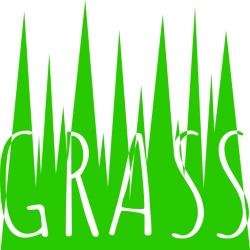La investigación podría abrir la puerta al descubrimiento de nueva física más allá del modelo actual
Los AGUJEROS NEGROS no son tan NEGROS… Termodinámica y gravedad cuántica
Nuevo vídeo de divulgación del IFT, esta vez protagonizado por la becaria de doctorado del Proyecto GRASS Carmen Gómez-Fayrén
Hay muchos más vídeos interesantes en el canal de YouTube del IFT
Entrevista a Carmen Gómez-Fayrén
La becaria de doctorado del Proyecto GRASS Carmen Gómez-Fayrén fue entrevistada por la asociación danesa de mujeres que trabajan en física Kvinder i Fysik. LA entrevista completa se puede leer aquí
Unas notas sobre la ciencia y el español en la ciencia
El día 7 de Noviembre fui invitado a participar en una especie de mesa redonda sobre la investigación en diseño en el marco del Primer Foro Iberoamericano de Investigación y Diseño .
Mi aportación consistía en describir la investigación en una disciplina científica tan antigua y consolidada como la física. Una parte del encuentro estaba patrocinado por el Instituto Cervantes, que seguramente debía de ver una oportunidad de promocionar el uso del español en la investigación., lo cual, en mi opinión, es una guerra perdida con los planteamientos de partida que se tienen.
Reflexionando sobre el tema, llegué a varias conclusiones que quizá a alguien le puedan resultar interesantes:
- La ciencia es una empresa universal que pertenece a toda la Humanidad. El mismo descubrimiento no se puede hacer en países diferentes.
- Hay que comunicarse con los científicos de todo el mundo en el idioma que entiende la mayoría de ellos. En otras épocas fueron el latín, el francés o el alemán y ahora es el inglés.
- Ése idioma es aquél en el que se expresa la mayoría de los mejores científicos que trabajan en un momento histórico concreto.
- Si se quiere ciencia en español (ciencia de vanguardia y no mera divulgación científica) lo primero que hay que conseguir es tener investigadores de habla española de talla internacional, que hagan que merezca la pena el esfuerzo de aprender el idioma. Lo mismo vale para la cultura en general, nos guste o no.
- La investigación produce conceptos nuevos y las palabras que los nombran. Se bautizan en el idioma del creador. Así, pues, hay que crear más, investigar más y mejor para que haya más palabras de origen español en el vocabulario científico. El «que inventen ellos» lleva indefectiblemente al «que nombren ellos». (El tiempo que tantos sesudos catedráticos y académicos han dedicado a castellanizar o buscar equivalentes en castellano a los neologismos científicos bautizados en inglés habría estado mejor empleado en investigar y crear ellos mismos esos conceptos).
- Ver la ciencia como algo separado del resto de la cultura nos ha llevado al retraso científico que históricamente nos aqueja. Sobre todo cuando lo que de forma sesgada se entiende por «cultura» gira sin cesar alrededor de las glorias pasadas a las que vuelve su mirada mientras el resto del mundo dirige la suya hacia las estrellas.
El vídeo de la mesa redonda está a continuación.

